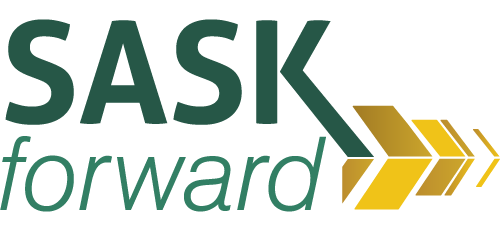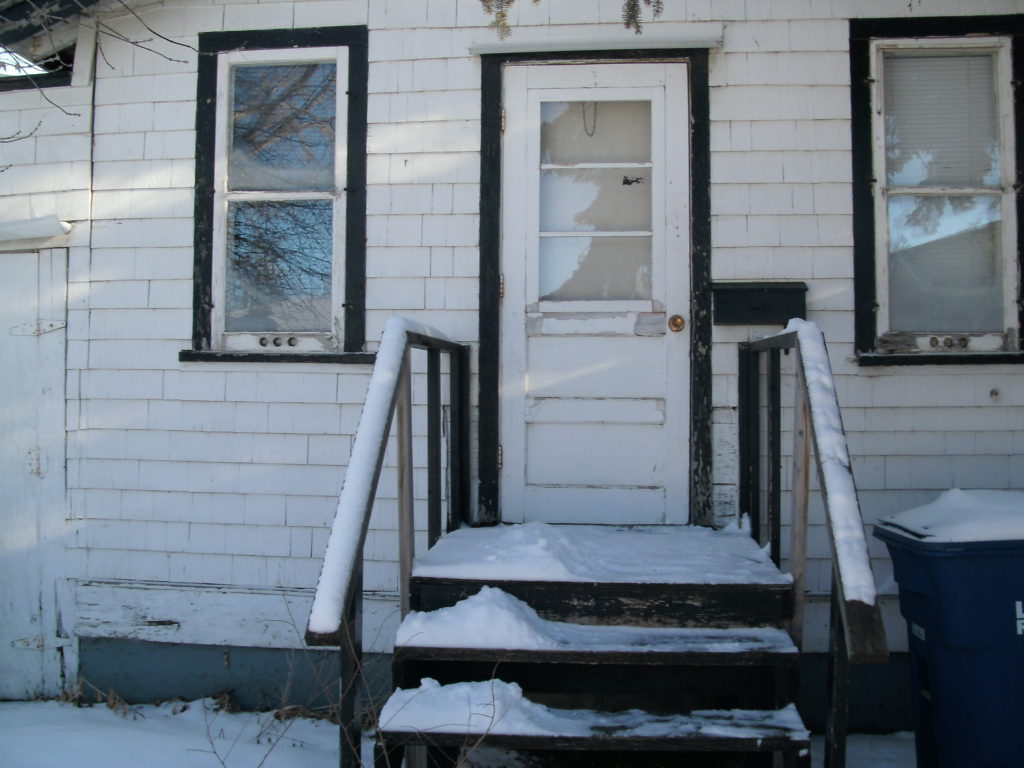YANCOAL SOUTHEY PROJECT: A HUGE STEP AWAY FROM SUSTAINABILITY
1. UNDERMINING PUBLIC INVOLVEMENT:
Yancoal’s Environmental Impact Statement (EIS) was only released on April 23, 2016, yet Yancoal tells us in its April 17th letter that “the public comments deadline will be May 24th”. Meanwhile it took the Saskatchewan Environmental Assessment Review Board two years to do its technical assessment.
The freeze on the process until after the April 4, 2016 provincial election contributed to the suppressing of these vital issues from public scrutiny. The extension of 15 days to June 6th remains a slap in the face of Saskatchewan’s democracy, especially for area farmers during high seeding time.
We know that “politics” and “economics” enter environmental assessment, mostly through narrow terms of reference and errors of omission. The big picture and the future typically don’t get sufficient attention. It is unacceptable for the broader public to only be given 45 days to consider the wider and long-term public interest.
QVEA POSITION # 1: Yancoal’s Southey Project should immediately be taken off the fast-track to allow public due diligence to prevail.
2. PROVINCE-WIDE REPERCUSSIONS FOR ENVIRONMENT AND WATER:
CARBON FOOTPRINT: The Yancoal mine could create as much as 1.09 million tonnes of C02 equivalents per year.[i] This would increase, not decrease Saskatchewan’s already high carbon footprint.[ii] Yet Yancoal has not looked at the potential of using any renewable energy and it even rejected co-generation (power from waste heat). This business-as-usual approach will not help Saskatchewan reorient its economy towards sustainability. The Yancoal project will not help Saskatchewan assist the country to cut its emissions by 30% below the 2005 level by 2030.
EXTERNALIZING COSTS: Yancoal wants to use gargantuan amounts of surface water to bring the potash above ground for processing; this solution mining will reduce Yancoal’s costs while externalizing huge costs to the environment and watershed.[iii] Yancoal admits that the benefits of solution mining include “lower up-front capital costs and no underground workforce.” This shows how, while costs are being externalized, benefits such as jobs are being greatly reduced.
Yancoal expressed an interest in a pipeline to Quill Lakes, perhaps to be supplemented by water from Last Mountain Lake. The Water Security Agency (WSA) and Sask Water prefer a costly pipeline from Buffalo Pound, possibly because they can better control the supply coming from Lake Diefenbaker.
Either way this is a totally unacceptable use and waste of fresh water. Yancoal’s figures suggest it will use 13 million cubic metres a year, 50% of the water used by Regina[iv]; it could be larger. Year in and year out for up to 100 years all this water would be permanently lost from the natural cycle. We must start to truly value and protect water; with the coming water crisis we can’t be removing fresh water from the hydrological cycle.
CLIMATE CHANGE: Furthermore, Buffalo Pound and Last Mountain Lake are both fed by Lake Diefenbaker, which provides domestic water to more than half of Saskatchewan’s residents. The amount of water in the South Saskatchewan River which, since the mid-60s, flows into Lake Diefenbaker has been markedly decreasing for a century and this decrease will accelerate with climate change. Recent summer flow levels have measured 86% below those recorded in 1910.[v] Both water quantity and quality will be at even greater risk.[vi] When surface water becomes scarcer, as it surely will, Yancoal and other companies could end up using water from and risking contaminating the Hatfield Aquifer on which many communities already depend.
A 2012 report already projected a 200% increase in water taken from the Qu’Appelle watershed by 2060.[vii] And this calculation was made before the Yancoal project or some other solution mines were even proposed.[viii] We see no credible provincial strategy behind the steady, incremental industrialization of water that will ensure that future water sources are protected and secure. [ix] The Water Security Authority (WSA) modeling and forecasting doesn’t even take climate change into account. There hasn’t been a study of the cumulative impact of Yancoal using the massive projected volume of water over 100 years[x]. Would the amount of water being extracted violate inter-provincial water-sharing agreements? There is simply too much uncertainty about future water supply or the impacts on other water users for this project to be approved.
NOT SUSTAINABILITY: Sustainability is about inter-generational justice; not undermining the ability of future generations to meet their needs. The incremental approach of the Sask Party government puts future generations at risk. It would therefore be foolish to approve the prolonged use and waste of such valuable water for the Yancoal mine.
QVEA POSITION # 2: Until a credible sustainable water strategy which takes climate change into account is developed there should be a moratorium on all mega-water industrial projects.
3. SEVERE IMPACTS ON LAND AND HABITAT:
VIABLE AGRICULTURAL DISTRICT: The area to be immediately affected by the Yancoal mine is a viable agricultural district: there are 126 homes and 325 residents within a 5-mile radius of the proposed mine site.[xi] The way Yancoal has been treating land owners is of great concern. Yancoal has resorted to corporate “divide and rule” tactics which pit those who are more removed from immediate impacts and see short-term benefits, against those that face the brunt and lasting effects of this mega-project.
UNDERGROUND IMPACT: This is not the way to approach the risks to the land, habitats and communities. Many vital questions remain. We know from other locations that fracking carries its own risks.[xii] Yancoal estimates that during operations it will be injecting underground about 20,000 cubic metres (m3) of brine a day from its reclamation ponds.[xiii] This amount of water will be permanently lost to the hydrologic system every day for the 100-year life span of the mine. And have the risks from the continual injection of such massive amounts of wastewater from solution mining underneath the Hatfield aquifer been fully considered?[xiv] It is admitted that subsidence or downward displacement of surface material would occur over the next 250 years but what would be the extent of land slumping? Are there other risks of underground movement, including earthquakes, such as have occurred from wastewater injection in the oil and gas industries across the border?[xv]
We prefer the Precautionary Principle. Some may want to argue that the geology is different here and that there has been some solution mine wastewater injection without noticeable underground impacts. The cumulative impacts, with Yancoal’s 100-year timeline and so many other solution mines being considered within this already vulnerable watershed should, however, now be very carefully considered.
ENDANGERED PRAIRIE ECOREGION: Underground contamination can come from pipeline leaks, rock fracturing and brine seepage into aquifers. Further, Yancoal plans to leave the salt tailings exposed. Just because this un-ecological practice has been allowed at potash mines does not mean it should continue. According to Parks Canada the Moist Mixed Grassland Ecoregion in the Prairies Ecozone where Yancoal wants to mine is already one of the most endangered areas in the world. And what are the risks of contamination of fragile fish habitat in the West and East Loon Creeks?
What are the risks of farm lands being greatly devalued? And why is Yancoal being allowed to side-step the foreign ownership guidelines? Yancoal has already purchased 4,200 acres but has an exception that allows them to buy up to 60,000 acres; does it really need this for a potash mine?
YANCOAL’S ENVIRONMENTAL RECORD: The foundational knowledge for all the technical assessments should be fully released and carefully scrutinized. Yancoal’s dismal environmental record abroad[xvi] should also be fully assessed.
QVEA POSITION # 3: At a minimum a panel of fully independent hydrologists should be formed to report on all the pertinent research about deep underground waste water injection before any further consideration is given to approving this project.
4. IMPLICATIONS FOR POTASH INDUSTRY AND PROVINCIAL REVENUE:
CONTROL OF POTASH: Yancoal is a Chinese state corporation which operates on a different time span than other resource companies. Their goal is as much about securing long-term global supply of non-renewables as it is about profitable production and marketing. It has a guaranteed interlocked purchaser, China.
With nearly half of known potash reserves, Saskatchewan is a prime target. And with its own domestic overuse and contamination of watersheds and aquifers, China is also interested in accessing cheap water abroad for its resource extraction. This greatly externalizes its costs onto the Saskatchewan environment.
ROYALTY IMPLICATIONS: Yancoal could be here for 100 years. This is its first such mine, which likely makes us their guinea pigs. And as it plans this huge project, other companies are laying off workers due to the slump in the global potash market. Is anything in place to ensure that Yancoal will not come to control Saskatchewan potash production and undermine the competition and the marketing system (Canpotex) that ensures that the province benefits somewhat from potash royalties? Will Yancoal’s involvement lead to lower prices as well as a shrinking commercial market? If BHP Billiton was kept from purchasing Potash Corp because it was considered a threat to this “strategic resource”, then shouldn’t Yancoal be held to the same standard?
QVEA POSITION # 4: Before this project is allowed to proceed any further there must be full public disclosure of all agreements and obligations made by the Saskatchewan government and those regarding the Chinese-Canada FIPA trade agreement which have any bearing on Saskatchewan’s long-term public interest in resource royalties and revenues.
5. SERIOUS CONSEQUENCES FOR QU’APPELLE VALLEY:
PROTECTING THE QU’APPELLE WATERSHED: The Lower Qu’Appelle is already considered to be facing “high intensity” stress regarding surface water allocation and ground water use. Roads, aquatic fragmentation, impact of landfills, livestock and fertilizer inputs, pesticides and contaminated sites all contribute to such stress in the watershed.[xvii] The diversion of millions of cubic metres of precious water for Yancoal’s mine will inevitably further undercut the aquatic health and recreational vitality of the Lower Qu’Appelle, which flows through the Qu’Appelle Valley. Furthermore, over the very long time span of the Yancoal solution mine, upstream saline and other contamination will almost inevitably make its way through the natural drainage system into the Loon Creek which goes into the already vulnerable Qu’Appelle Valley watershed.[xviii]
Yancoal’s solution mine has direct implications for both water quantity and quality throughout the Qu’Appelle Valley Basin. The environmental review process should therefore not be skewed to exclude those who will ultimately be impacted downstream. Downstream indigenous as well as settler communities have a lot at stake here, yet in both cases the broad public has not been directly involved in the review process. This is unacceptable.
QVEA POSITION # 5: Before this project goes any further there must be a full, informed public discussion of the implications of the Yancoal project for the quantity and quality of water passing through the Q
[i] Yancoal Southey Project, Saskatchewan Environmental Society, June 2, 2016.
[ii] In 2011 Saskatchewan surpassed Alberta as having Canada’s highest per capita carbon footprint. The Canadian average was 20 metric tonnes per person per year, while Saskatchewan was 68 metric tonnes per person per year. This is among the highest level anywhere in the world.
[iii] Other Potash companies also admit this transfer of costs: e.g. Encanto Potash Corp writes that at Muskowekwan First Nations it plans “a solution mine for a number of reasons including longer mine life, lower CAPEX (capital expenditure), higher rate of return and shorter time of production…” See encantopotask.com/muskowekwan project.
[iv] On its website Yancoal says it will use 1,450 cubic metres (m3) an hour, which would amount to 13 million cubic metres (Mm3) a year. Regina’s water consumption was 23 Mm3 in 2013.
[v] Glaciers feeding the headwaters of the two Saskatchewan Rivers have shrunk by 25-30% since the 1950s. The maximum depth of snow and number of days with snow on the ground have both declined significantly. See W.F. Donahue, Freshwater Issues and Challenges in Alberta, Canadian Forest Service, Science Seminar Series, March 13, 2008.
[vi] See “Climate Change and our Watershed”, In We Are All Waterkeepers, Fort Qu’Appelle Kairos, Sept. 2014, pp. 20-23.
[vii] One proposal is to build an Upland Canal from Lake Diefenbaker to Buffalo Pound Lake to try to increase the flow to handle a projected 219% increase in demand for agriculture and a 172% increase in demand for industry and mining by 2060. See Clifton Associates, Upper Qu’Appelle Water Supply Project, 2012. Also see “Upland Canal Project”, Kairos 2014, pp. 14-16.
[viii] The Mosaic solution mine at Belle Plain already draws water from Buffalo Pound. The K & S Legacy solution mine near Bethune which the company admits will be “water-and-energy intensive” has now been told that it will also be provided water from Buffalo Pound. Vale was promoting a solution mine at Kronau which initially was to draw water directly from Katepwa Lake; it is now on hold. Western Potash is proposing a solution mine at Milestone, Karnalyte Resources is proposing another, the Carnallite project, at Wynyard and Encanto is proposing a solution mine on Muskowekwan First Nations. How many such water-gorging solution mines can the Qu’Appelle Watershed bear? Potash Corp also has a solution mine at Patience Lake near Saskatoon.
[ix]With climate change come earlier springs and algae buildup in the 5.5 metre deep Buffalo Pound Lake. Regina’s supply has already been restricted by 50% in May of 2015 due to this convergence. And the ability to increase the flow into Buffalo Pound from Lake Diefenbaker is highly limited, especially in winter months, without a very expensive canal mega-project, to which the WSA and Sask Party government has not committed. And even then there would, over time, be a reduced flow from Alberta.
[x] One billion, 300 million cubic metres of valuable surface water would be taken out of the natural system. This is not sustainable.
[xi] Havelock Special Projects Committee.
[xii] See Bob Weber, “Fracking, Not Water Disposal, Caused Canadian Earthquakes”, Canadian Press, March 29, 2016. David Eaton at the University of Calgary studied 12,000 fracked and disposal wells drilled in Western Canada by the oil and gas industry between 1985-2015 and found that earthquakes were twice as likely to be associated with fracking as with wastewater disposal.
[xiii] If Yancoal uses 34,800 cubic metres of water a day (1,450 m3 an hour), this figure of 20,000 m3/day suggests there will be some recycling of water before it is disposed.
[xiv] “The amount of pressure on the injected water should be disclosed and the risk of earthquake generation should be investigated.” Saskatchewan Environmental Society (SES) submission, June 2, 2016.
[xv] “Earthquakes and Hydraulic Fracking”, Earthwork Fact Sheet, n.d., states that earthquakes have been “linked to fracking wastewater injection in at least five states.” Also see “Earthquakes triggered by fracking wastewater in Oklahoma”, Associated Press, July 3, 2014. This reports that the salty “wastewater is leftover from unconventional wells that drill for oil and gas with the help of high pressure fracking and from the removal of water from diluted oil. These new methods mean much more wastewater has to be discarded.”
Also see Terry Reith and Briar Stewart, “Do fracking activities cause earthquakes? Seismologists and the state of Oklahoma say yes”, CBC News, April 28, 2016. This reports that a number of earthquakes in Oklahoma have been “blamed on the injection of wastewater from oil production into wells”.
The 700 people from 20 countries who attended the Seismology Society of American meeting in Reno Nevada heard about studies showing that there definitely is a relationship between “deep disposal and earthquake activity” that has been increasing since 2011.
Could a similar thing occur from potash solution mining when the massive amount of toxic brine wastewater is injected into deep wells?
[xvi] Yancoal is a subsidiary of Yanzhou Coal and Yankuang Group, one of China’s largest fossil fuel conglomerates. Yancoal controls 10 coal mines in Australia and plays a big role in China’s huge C02 emissions. Coal mining and coal-generated electricity also contribute to widespread toxic contamination of both land and water in China. See Jim Harding, Are We ready to Sell Our Future to China? R-Town News, May, 31, 2014 and also available at: www.crowsnestecology.wordpress.com
[xvii] State of the Watershed Report, Water Security Authority, 2010, p. 32-36.
[xviii] The first lake, Pasqua Lake is already suffering from a massive nutrient load which comes in part from decades of Regina’s untreated sewage.








